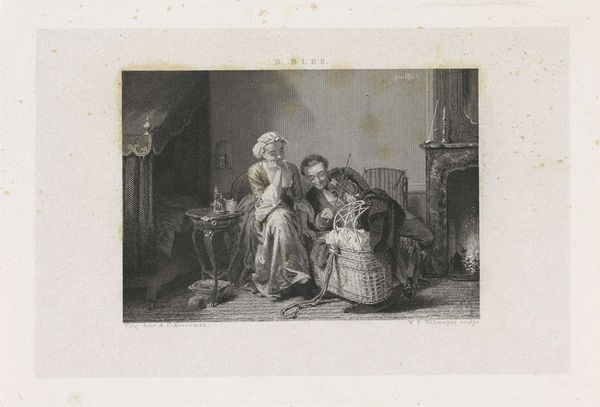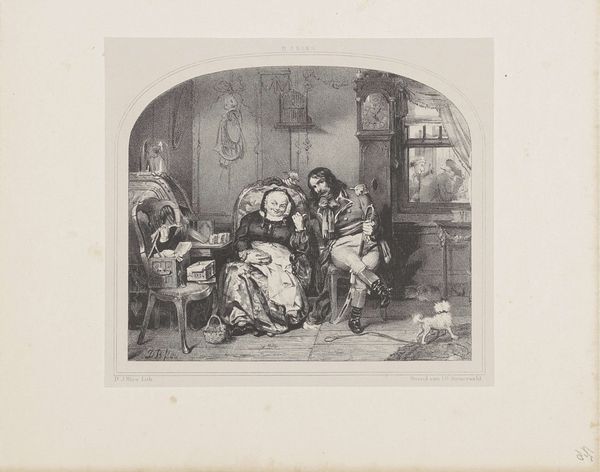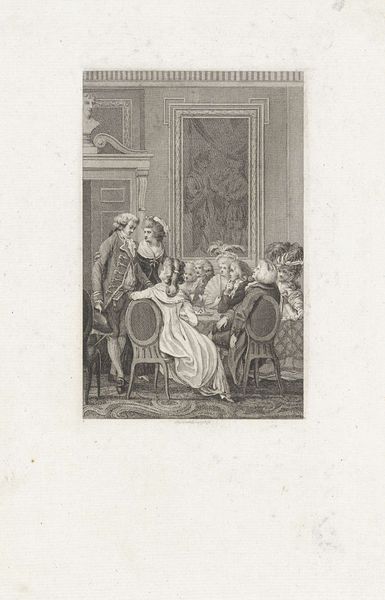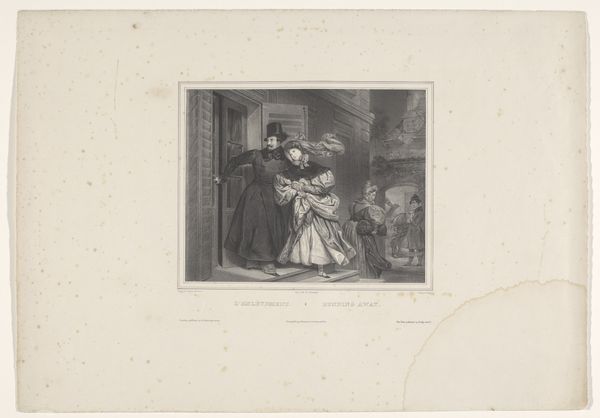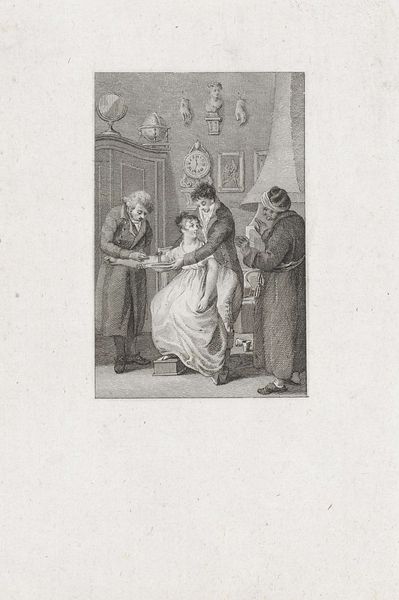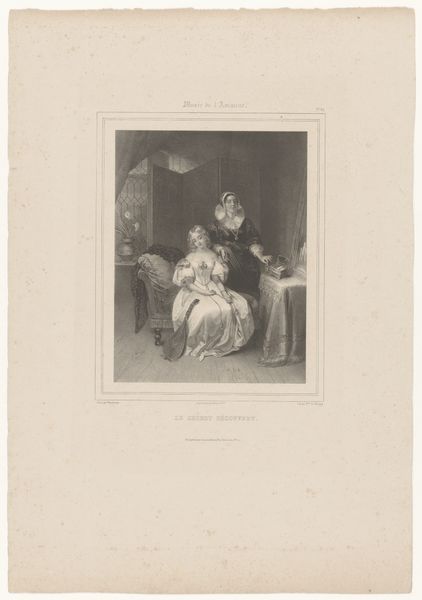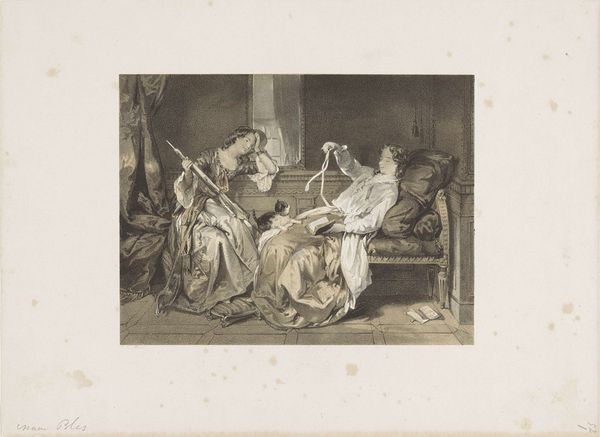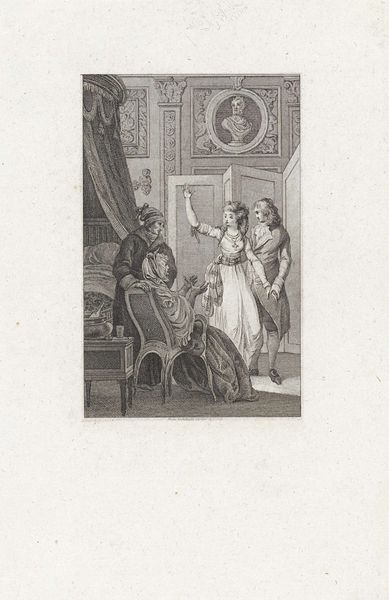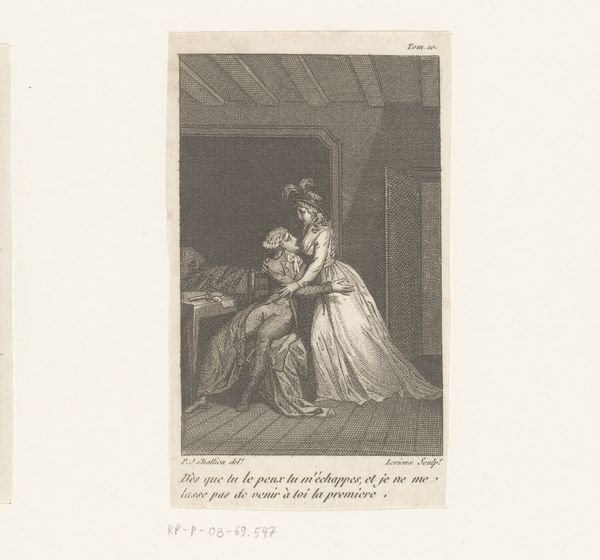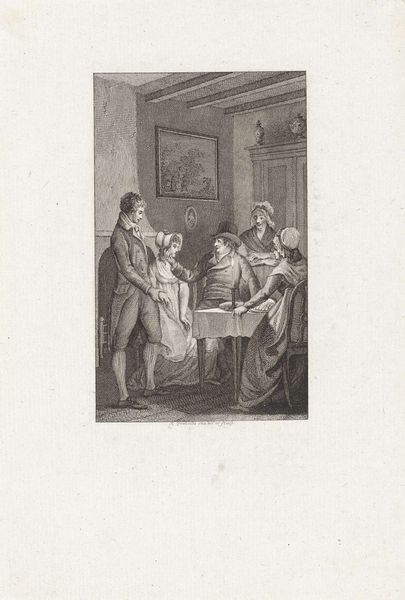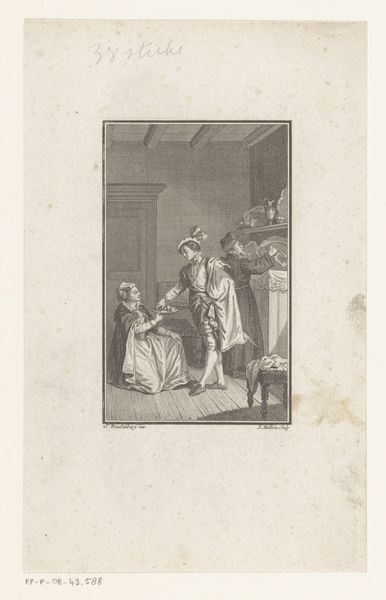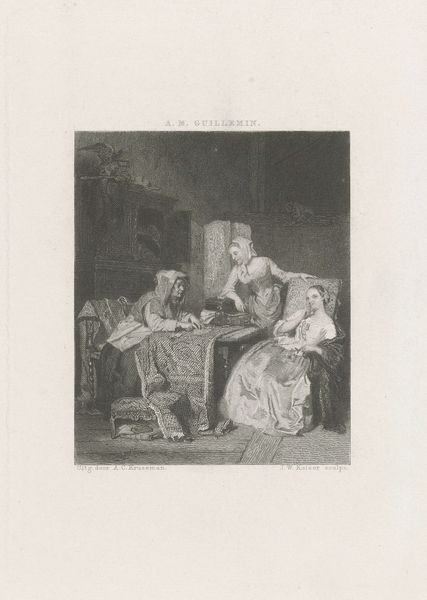
drawing, print, pencil, engraving
#
portrait
#
pencil drawn
#
drawing
#
negative space
#
narrative-art
# print
#
pencil sketch
#
figuration
#
form
#
pencil drawing
#
romanticism
#
pencil
#
line
#
genre-painting
#
history-painting
#
tonal art
#
engraving
Dimensions: height 229 mm, width 137 mm
Copyright: Rijks Museum: Open Domain
Editor: Here we have "Figuren aan een sterfbed," or "Figures at a Deathbed," a print made with pencil and engraving techniques by Willem Frederik Wehmeyer sometime between 1834 and 1854. The stark monochrome and enclosed scene evoke a somber atmosphere. What do you notice in terms of its material construction and historical significance? Curator: The stark contrasts achieved through pencil and engraving point to the changing means of pictorial reproduction in the 19th century. We see the rise of print culture – art becoming increasingly accessible, not solely the domain of the wealthy. Note how the artist uses line and tonal variation; these methods translate artistic skill into replicable imagery. Editor: That’s fascinating! So, instead of focusing on the subject matter alone, you're drawn to the processes that allowed for wider dissemination? Curator: Exactly. Think about the social impact: Suddenly, images, narratives, and even political ideologies could circulate among a much broader audience. Look closely at the labor involved in creating the engraving plate – the craftsperson mediating the artist's vision, contributing to the final product's material form and social meaning. The value of the print lies not just in its aesthetic quality but in its potential for mass consumption. What does the choice of material suggest to you? Editor: Maybe the accessibility of pencil and print reflects a growing democratization of art production itself, moving away from the exclusive patronage system? The lines almost seem… rougher, less idealized than earlier engravings. Curator: Precisely! It hints at a shifting relationship between artist, craftsperson, and consumer. Consider too, the economic structures supporting this expanded art market – the publishers, distributors, and the emergent middle-class audience eager to consume these images. Editor: So much more to consider than just the figures' emotional state. Curator: Absolutely! The material and production processes reveal so much about the society that created and consumed it. What do you think, could the widespread production contribute to a loss of exclusivity for high art, opening up space for new forms and artists? Editor: I'd not thought of that, the print is no longer simply art for elites but a medium that democratises visual narratives and prompts discussions far beyond a single collector's walls. Thank you!
Comments
No comments
Be the first to comment and join the conversation on the ultimate creative platform.
